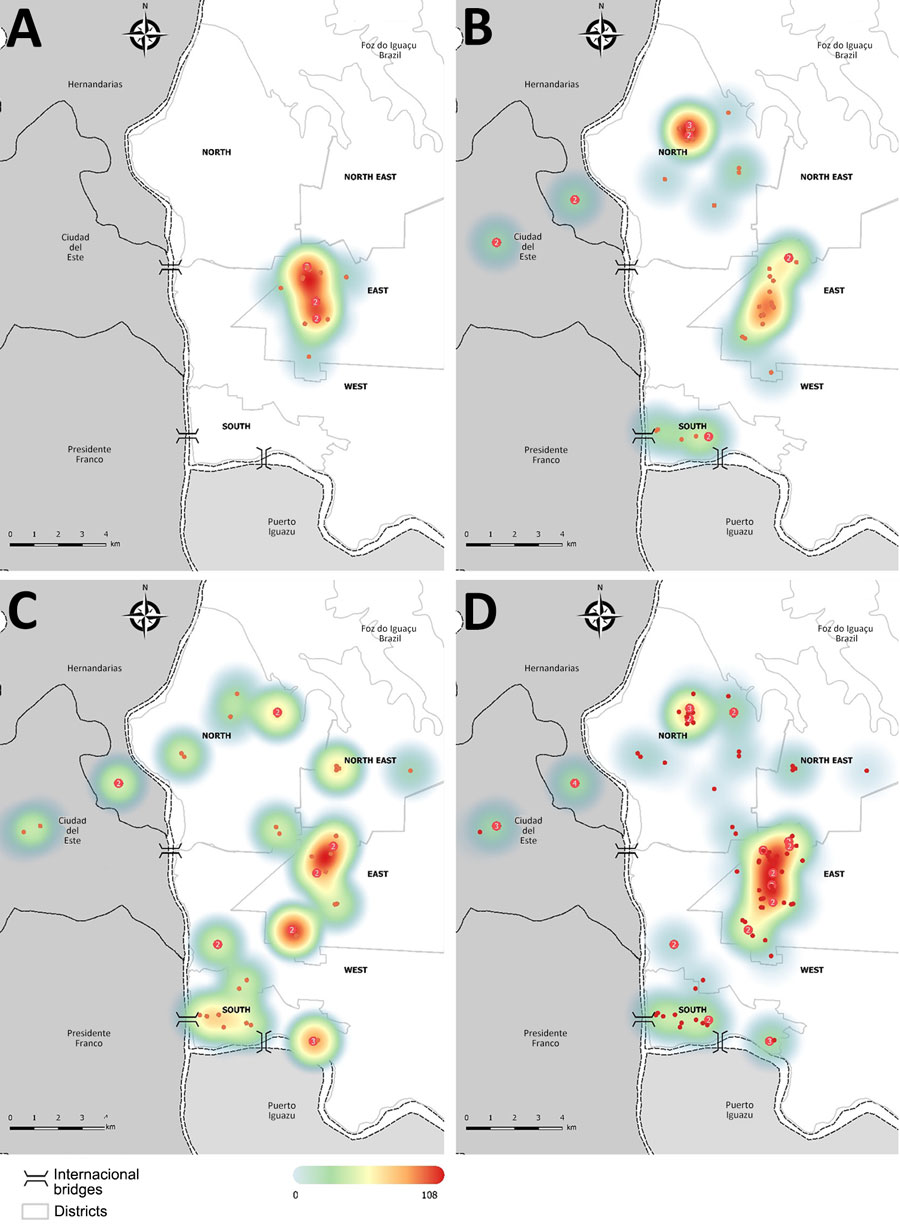Volume 31, Number 9—September 2025
Research
Sporothrix brasiliensis Treatment Failure without Initial Elevated Itraconazole MICs in Felids at Border of Brazil
Figure 1

Figure 1. Heatmaps showing the spatial distribution of cats with proven sporotrichosis in the triple border region of Brazil (white), Paraguay (dark gray), and Argentina (light gray) during 2021–2023 in study of Sporothrix brasiliensis treatment failure without initial elevated itraconazole MICs in felids at border of Brazil. Red dots show locations of feline sporotrichosis cases during 2021 (A), 2022 (B), and 2023 (C) and for all 3 years combined (D). Numbers in red dots indicate multiple positive cats in the same house.
1These first authors contributed equally to this article.
2These senior authors contributed equally to this article.
Page created: June 23, 2025
Page updated: August 26, 2025
Page reviewed: August 26, 2025
The conclusions, findings, and opinions expressed by authors contributing to this journal do not necessarily reflect the official position of the U.S. Department of Health and Human Services, the Public Health Service, the Centers for Disease Control and Prevention, or the authors' affiliated institutions. Use of trade names is for identification only and does not imply endorsement by any of the groups named above.